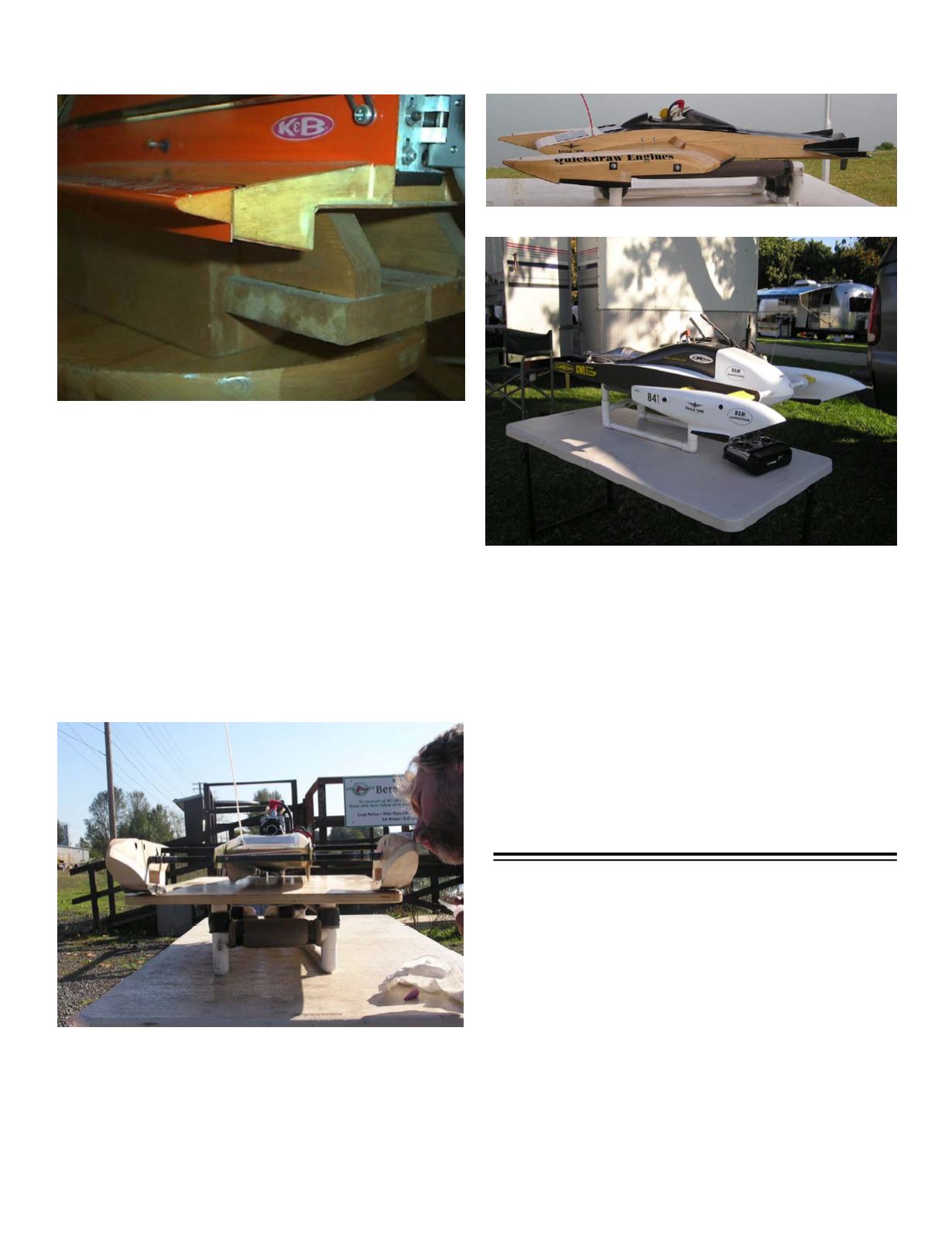
The most refined air trap sponson design was Mike’s GX2
rigger. This design combined the effects of air flow in several
ways to both lift and help stabilize the boat. The center section
was not air trapped, but side plates channeled air over the top of
the wing. The sponson air traps lifted the heavy boat and helped
eliminate sponson walk. I believe that they created a trough in the
water as well. This helped the boat track straight. The small
airfoils on the booms could be rotated to create a small down
force when needed. The streamlining effect was negligible
compared to the water drag.
Air trap sponson testing on smaller riggers doesn’t seem to be
as helpful. Perhaps the natural air flow under the sponsons is
enough to reduce the drag of light weight boats.
That’s a quick overview of the uses of wings in high speed
boats. Next we will look at planing surfaces both in mono hulls
and on sponsons.
You may have noticed that the race
entry form for the 2017 NAMBA
Nationals is stapled in the middle of
this newsletter. Feel free to bend back
the staples and remove the four pages
of entry form and fill out, enclose
payment, and mail to the appropriate
address.
Air traps can be used even closer to the water surface. Air
trapped sponsons accentuate the natural lift on sponsons from the
air flowing under them. Rod Geraghty used the sponsons as air
traps on the main wing as well as additional sponson air traps to
help lift the stern of his innovative tunnel design. Small stub wings
in ground effect on the sponson sides at the stern also helped.
Notice the end plates at the bow.
The sponsons on high speed riggers and hydros only touch the
water occasionally in straight line runs even without air traps.
Because the trapped air under air trapped sponsons acts like a
cushion, sponson walk is reduced. That lets heavy boats run at high
speeds even in rough conditions. Mike Bontoft used air trapped
sponsons extensively after he discovered a change to air trapped
sponsons added around 3 mph at 100 mph on his gas rigger. His
gas sport hydro made 100 mph passes when no other boats could
run as conditions deteriorated.
The air trapped center body on this test bed rigger generated too
much lift, letting the prop blow out. Mike’s gas sport hydro still
had too much lift from its wing, but the air trapped sponsons
worked well. The small wing at the transom helped lift the stern
out. It wasn’t enough to counter the excess wing lift.
PROPWASH
18
April 2017
Wing and air trap detail
Gas rigger test bed with air traps everywhere
Mike Bontoft’s gas sport hydro sponson air traps
Mike Bontoft’s GX2 rigger


